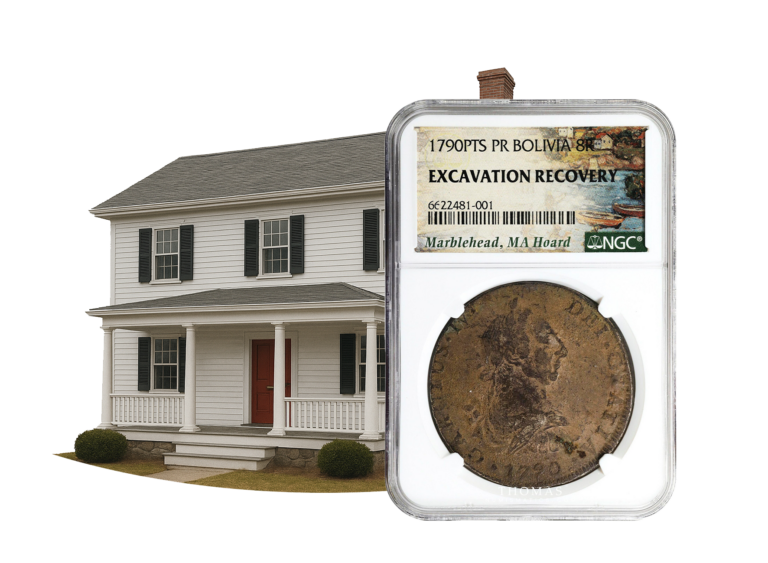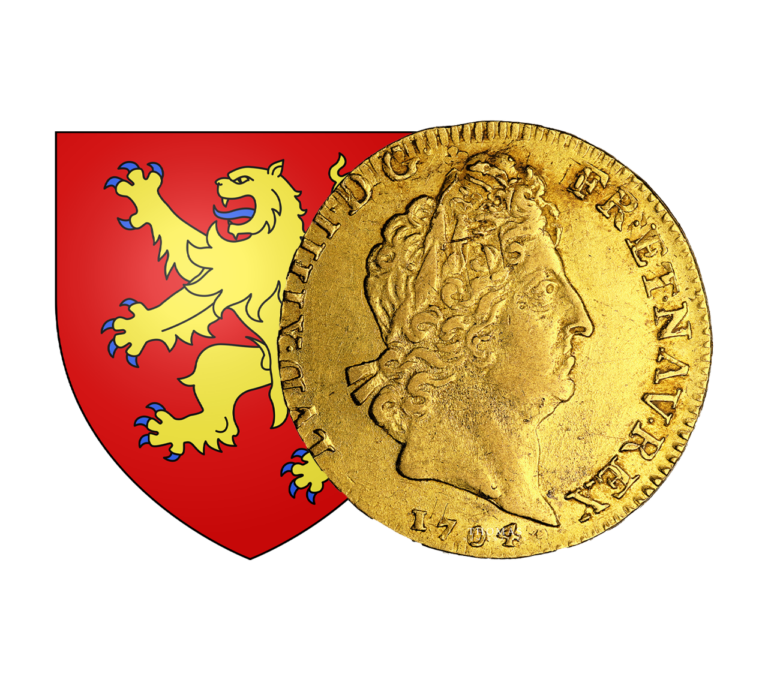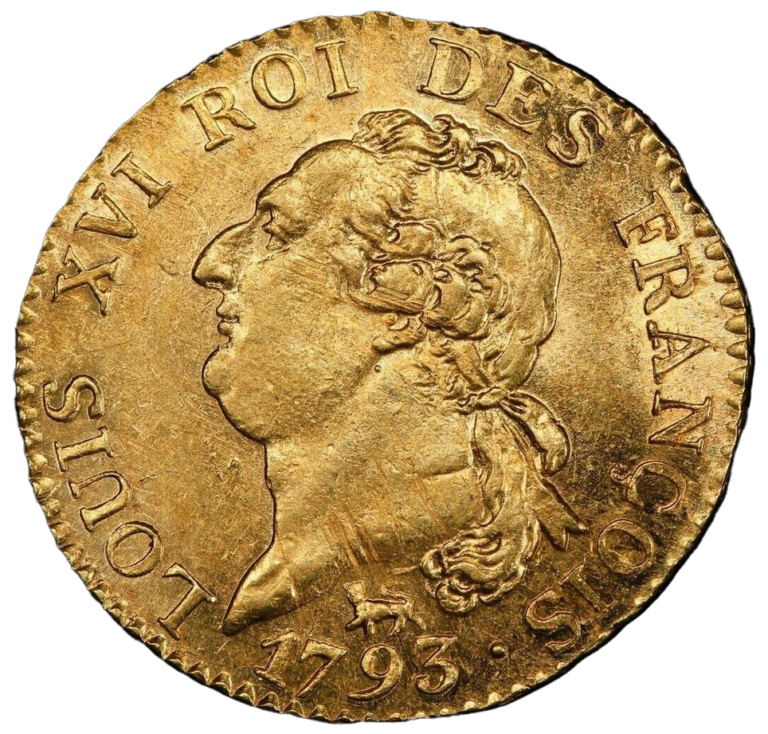
Discover all the news and articles from TNUMIS Magazine exclusively
Interview with Philippe Théret
Le Franc. Les essais, les Archives. Napoléon Ier, released in October 2023, covers the Germinal Franc from 1803 to 1815. It provides a study of 402 tests, accompanied by their quotations, for four or five states of preservation.
This volume is the first in a much broader study of tests, ranging from the creation of the Franc to the fall of Napoleon III. The series aims to be a true encyclopedia of modern French numismatics, thanks to a historical and scientific approach.
This series represents the culmination of colossal research work orchestrated, among others, by Philippe Théret. We met him, and he agreed to answer our questions.

What is your background as a numismatist?
Today, numismatics has become my main activity, following a professional career as a computer engineer. At first glance, these two passions may seem unrelated, yet research brings them together. Previously, I was exploring artificial intelligence; now, investigating the tests of the Franc consumes all my attention.
I discovered the world of collecting at the age of 14, thanks to a numismatist neighbor who opened the doors of his library to me. I then subscribed to specialized magazines, and quickly, my area of expertise emerged: silver coins from the First Republic.
I bought my first coin at 17: a 5 Francs Union et Force coin, Year 7 from Bayonne. I remember it as if it were yesterday.
How did the project of the collection Le Franc. Les Essais, les Archives come about?
Adult, I joined the Friends of the Franc association. In this context, along with some colleagues from the association, we wanted to develop a new approach to currency, utilizing the archives of la Monnaie de Paris.
In 2003, we began the long work of digitization and data acquisition, carried out by a whole team. All in all, more than 160,000 photos were taken. The Friends of the Franc thus own a fund of about 250,000 pages, handwritten or typewritten. Once all this data was collected, we proceeded to read the contents, sometimes written in old formulations, and analyze them.
Initially, the goal was to share knowledge on the association’s forum and in numismatic magazines or journals. Ultimately, the collected writings were so dense and fascinating that we decided to turn them into a book. Then two. Then three…
The first two volumes focus on common coins. The book Le Franc. Les monnaies, les archives was published in 2019. In 2021, we wanted to pay tribute to the engraver and artist, with the work Le Franc by Augustin Dupré.
In October 2023, we released the first volume of a long series on tests: Le Franc. Les Essais, les archives. Napoléon Ier. Five other volumes will follow: the second volume on Louis XVIII is currently being printed, the third will cover the reign of Charles X, and the subsequent ones those of Louis-Philippe, the Second Republic, and Napoleon III.
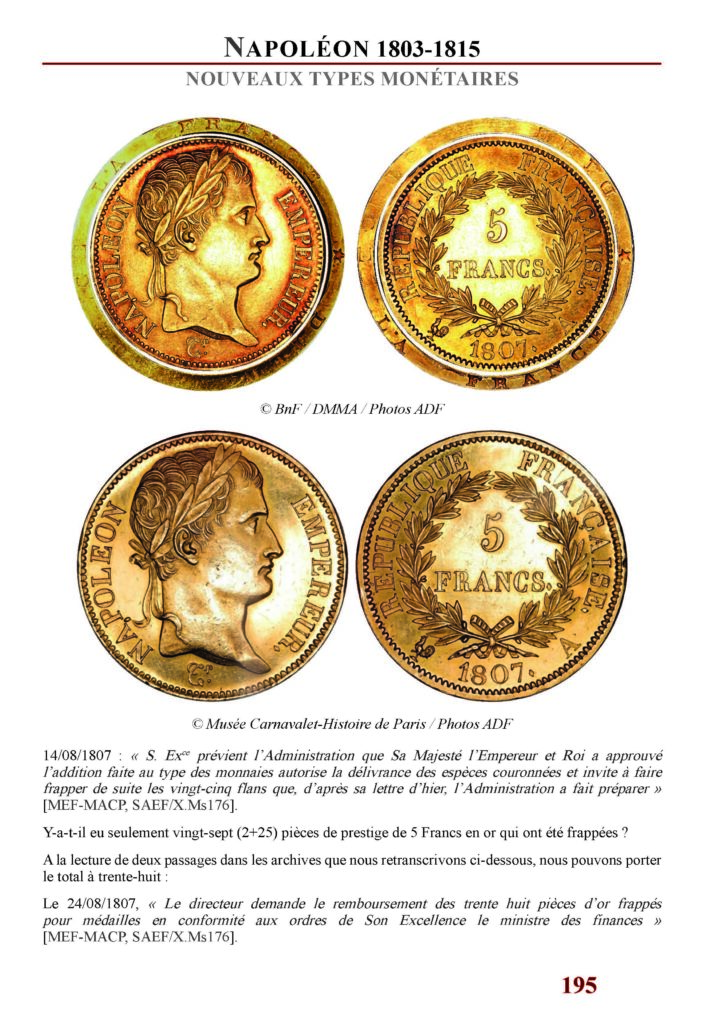
Who is this collection intended for?
For numismatic collectors of monetary tests, of course, but also, more broadly, for collectors of French coins. Thanks to the release of the first two volumes on common coins, in addition to the archives, we have been able to access the national collections of France (coins and minting tools).
Le Franc. Les Essais, les archives. Napoléon Ier presents the variants, their rarity, the evaluation of their price according to their state of conservation, which allows both beginner and experienced collectors to find all the information.
The book includes different reading levels:
- the reproduction of archives that constantly connect monetary history with great history;
- the catalogs of the tests;
- the illustrations of the coins, in large formats, which are akin to works of art and enhance the work of the engravers.
How does Le Franc. Les Essais, les Archives stand out from other published works on the subject?
Le Franc. Les Essais, les archives. Napoléon Ier has delivered better comprehensiveness, with a scope 2 to 3 times larger than those of old reference works on the subject. The trend in other volumes of the series is the same.
It includes 544 pages richly illustrated with a multitude of archival documents, decrees, monetary ordinances, and explanations. This state of knowledge had not been updated for over a hundred years with this level of detail, thus revealing the wealth of previously unknown information.
Moreover, the illustrations are also of high quality, in color and in large format. New information on manufacturing figures has been added, which impacts the rarity index and the rating.
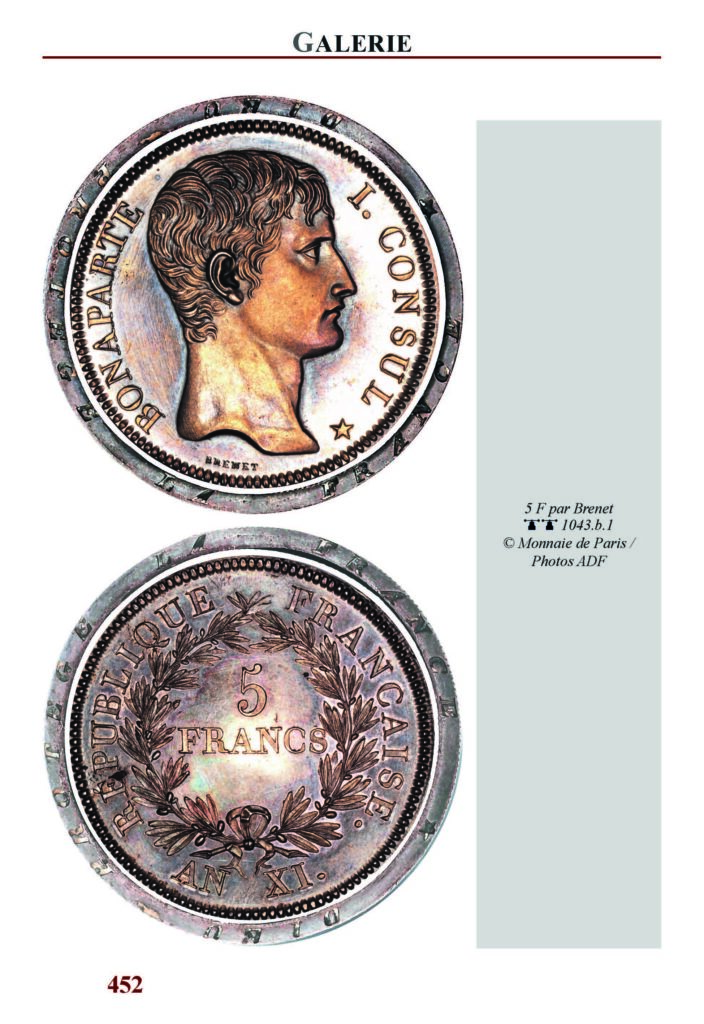
Has this work made your view of numismatics evolve?
Indeed, these books are not just catalogs or accumulations of tests; they offer an analytical perspective that relates numismatics to historical events.
Diving into all these archives has made me realize how meaningful numismatics is. Within their context, the tests are not just objects, but markers of historical changes, political and administrative decisions.
The processes of creation and manufacturing, their evolution, and also the anomalies, help to understand much broader historical notions. The small story is connected to the great one, and numismatics reveals itself to be the photo albums of bygone eras, the advertisements of a sovereign or a regime in place.
What numismatic anecdote would you like to share with us?
The 1803 tests of Napoleon I are shining examples of what I have just told you.
The Franc had already existed since 1796, but the monetary system was based on silver and bimetallism had not actually been implemented. When Napoleon consolidated his power, he wished to reform all this.
The Germinal law of March 28, 1803, confirms the establishment of bimetallism, by setting a fixed ratio of the value of silver against gold.
Napoleon I also ordered the minting of new gold coins with his portrait instead of the figure of the Republic (Hercules). The technique evolved with the use of a full ring (called full ferrule) in the minting process, which allows for the creation of perfectly round coins.
Five 40-franc gold tests were carried out that year before the promulgation of the Germinal Franc laws to validate Bonaparte’s aesthetic rendering of his engraved portrait, as well as the use of this new technique. One of these five coins was immediately destroyed, as a sample was always melted down to verify the exact composition and gold content. These four specimens will be the only ones to be marked with the year 11 in Arabic numerals. Indeed, Napoleon I demanded that the year rather be struck in Latin numerals XI on circulating coins, to avoid confusion with the year 2, which then referred to Robespierre’s Reign of Terror.
These are the kinds of stories you’ll find in this series of catalogs on the Franc, which, in short, make up the soul of a collection.
